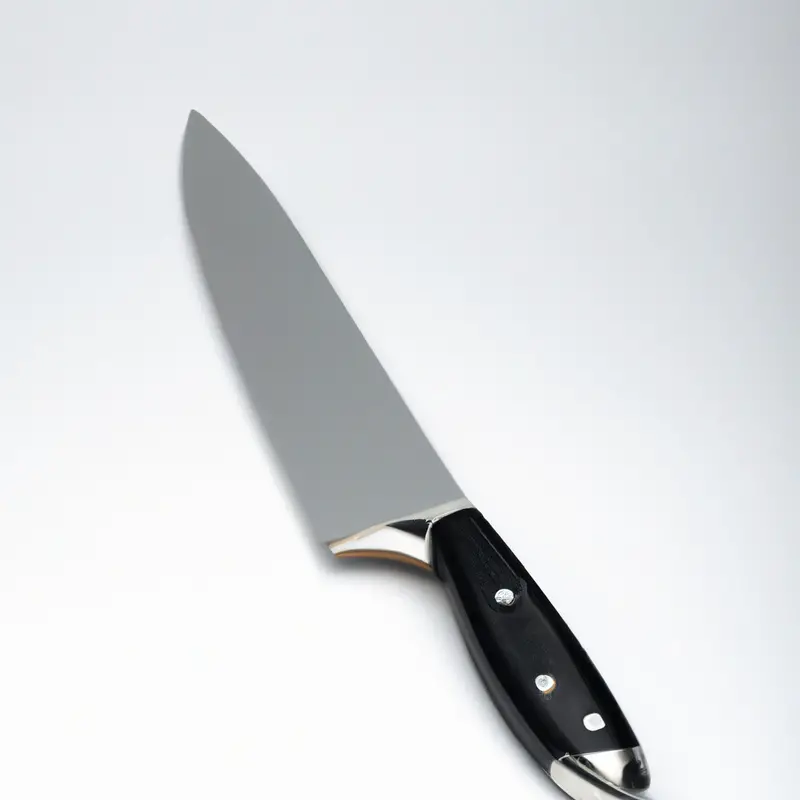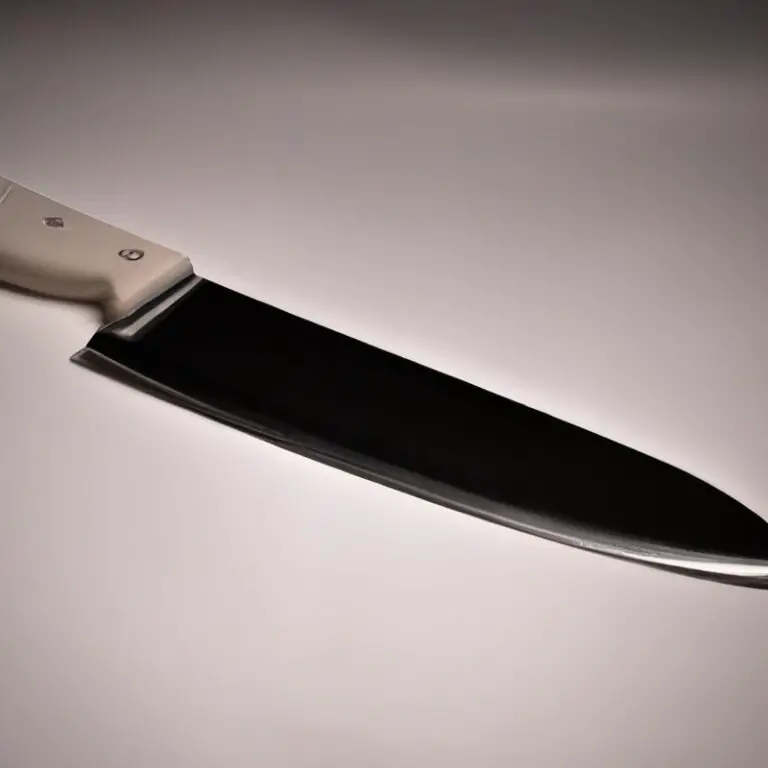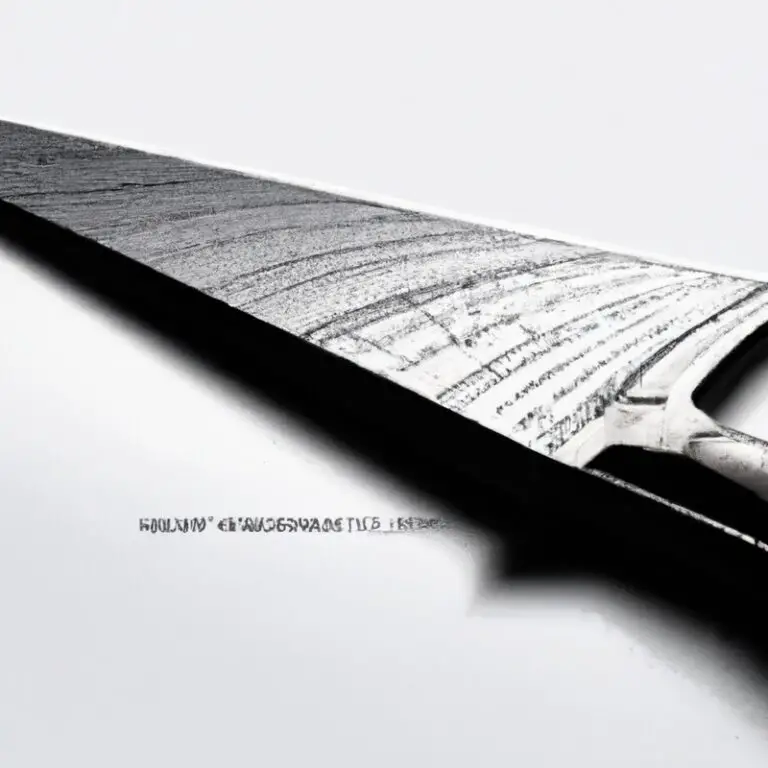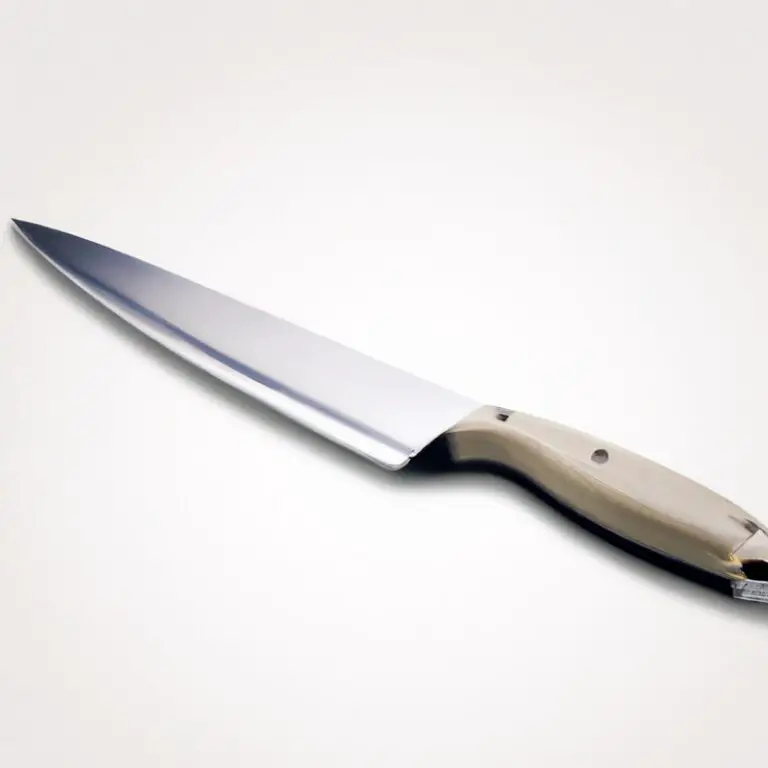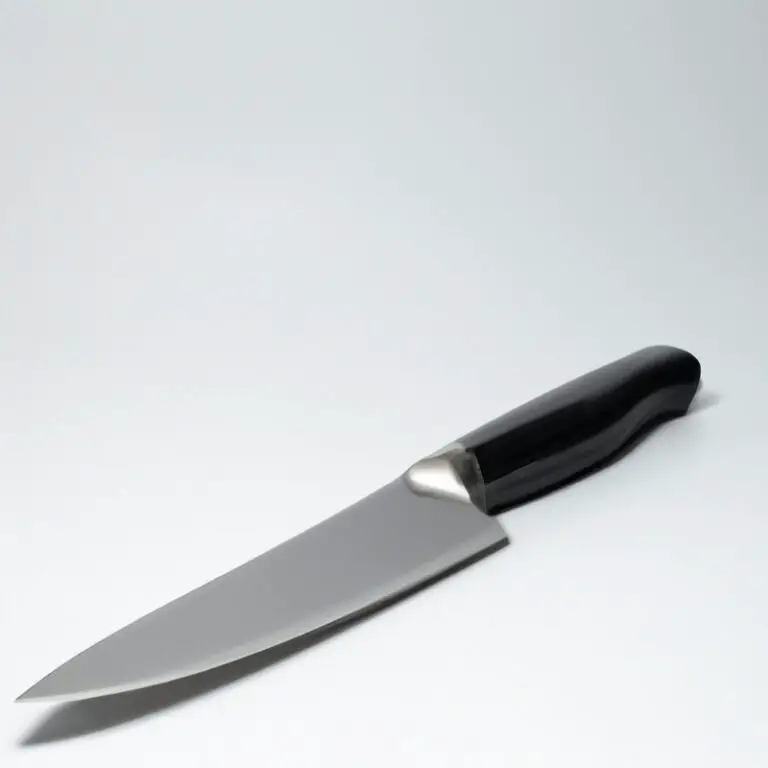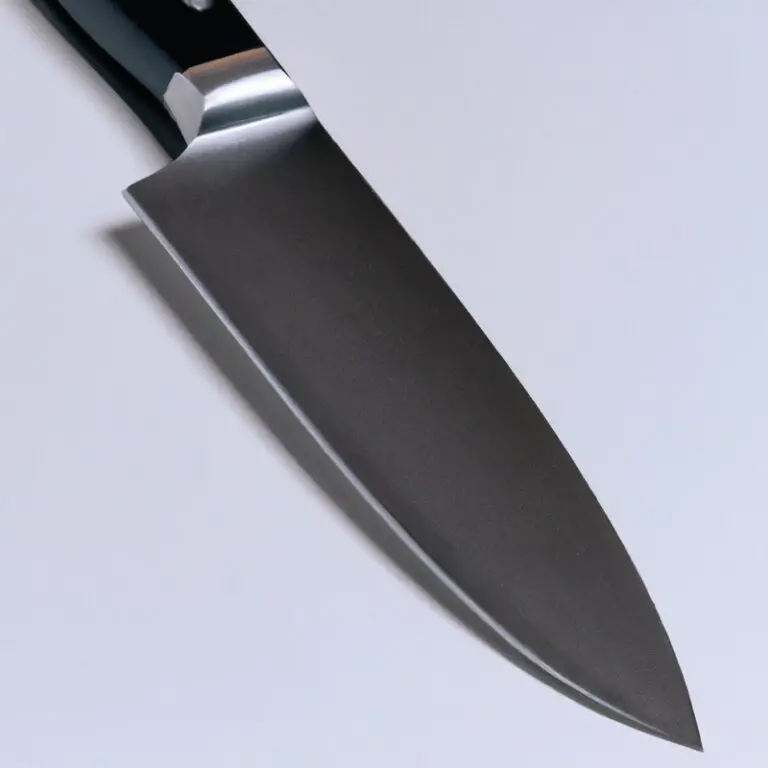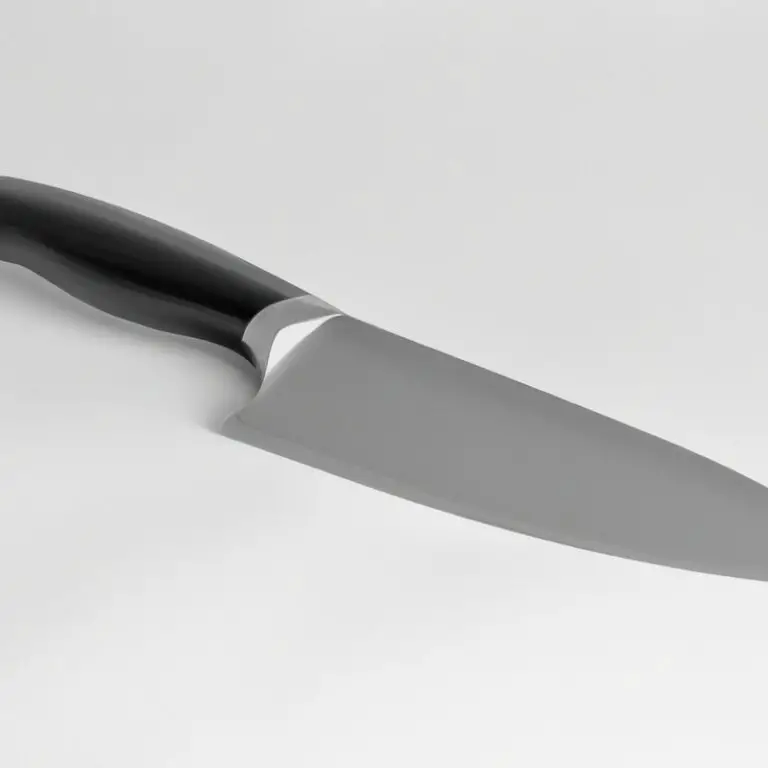How Is a Santoku Knife Different From a Chef Knife?
Key Takeaways:
- A Santoku knife is a Japanese knife that has a shorter and wider blade than a chef knife and is designed for slicing, chopping, and dicing vegetables, fish, and meat.
- A chef knife, also known as a French knife, has a longer and narrower blade than a Santoku knife and is versatile enough to handle various cutting tasks in the kitchen.
- While both knives can be used interchangeably, the choice between a Santoku knife and a chef knife ultimately comes down to personal preference and the type of cutting tasks being performed.
- When selecting a knife, it is important to consider the size of your hand, the weight of the knife, and the type of cutting performance you desire to ensure optimal efficiency and comfort in the kitchen.
If you’re an avid cook, then you know the importance of a sharp and reliable knife in the kitchen. However, when it comes to selecting the right one for your needs, the options can be overwhelming.
One common dilemma is choosing between a Santoku knife and a chef knife.
While they may seem similar at first glance, there are distinct differences in their anatomy, performance, and cutting techniques, each better suited for certain tasks and ingredients. In this article, we’ll delve deeper into the differences and help you choose the right one for your culinary needs.
| Santoku Knife | Chef Knife |
|---|---|
| Shorter and wider blade | Longer and less wide blade |
| Typically has a straighter edge | Typically has a curved edge |
| Lighter and easier to maneuver | Heavier and requires more control |
| Designed for slicing, dicing, and chopping vegetables and boneless meats | Designed for a variety of tasks including slicing, dicing, and chopping vegetables and meats with bones |
| Less versatile, but more specialized for specific tasks | More versatile and able to handle a wider range of tasks |
Understanding the anatomy of a Santoku knife vs. chef knife
The anatomy of a Santoku knife is different from that of a chef knife. The Santoku knife has a shorter, wider blade with a flat edge and a curved tip.
It typically ranges from 5-7 inches in length.
On the other hand, the chef knife has a longer, thinner blade with a curved edge and a pointed tip. It generally ranges from 8-10 inches in length.
The Santoku knife’s straighter edge allows for a chopping motion, while the chef knife’s curved edge is better suited for a rocking motion.
The Santoku knife’s wider blade makes it ideal for slicing and dicing, while the chef knife’s longer blade is better for larger cuts of meat and vegetables. Both knives require a comfortable grip and a balanced weight distribution, making them easy and safe to use.
The Santoku knife often has grantons, or small grooves along the blade, to prevent food from sticking.
The chef knife’s smooth edge allows for clean, precise cuts. When choosing between a Santoku knife and a chef knife, it’s important to consider the tasks you’ll be performing.
The Santoku knife is best for precision cuts such as julienning or mincing, while the chef knife is better for larger cuts and more versatile in general.
How blade shape affects the performance of a Santoku knife and chef knife
Blade shape plays a crucial role in determining the performance of a Santoku knife and chef knife. A Santoku knife has a shorter and wider blade with a flat edge, while a chef knife has a longer and narrower blade with a curved edge.
The broad blade of a Santoku knife is ideal for chopping, slicing, and dicing vegetables, meat, and fish.
In contrast, the curved blade of a chef knife is better suited for rocking back and forth to chop herbs and mince garlic. The shape of the blade also affects the weight and balance of the knife, with the Santoku knife typically being lighter and more balanced than a chef knife.
Ultimately, the choice between a Santoku knife and a chef knife depends on personal preference and the specific tasks at hand.
The differences in cutting techniques between a Santoku knife and chef knife
The cutting techniques used with a Santoku and a chef knife differ due to their unique blade designs. The flat blade of a chef knife makes it ideal for a rocking motion while the curved blade of a Santoku knife is better used for straight downward cuts.
Santoku knives are perfect for precision cuts and delicately slicing thin ingredients like vegetables, fruits, and fish.
On the other hand, chef knives are more versatile and excel at chopping, mincing, and splitting larger ingredients like meat, poultry, and tough vegetables. It’s important to consider the specific task at hand to determine which knife is best suited for the job.
Which tasks are best suited for a Santoku knife?
A Santoku knife is best suited for tasks that require precision slicing and dicing, such as chopping vegetables, herbs, and fruits. Its flat blade and sharp tip enable it to make clean, even cuts easily.
Additionally, its lightweight and nimble design make it perfect for intricate tasks like mincing garlic and shallots.
If you work with boneless meats or delicate fish, the Santoku knife is ideal due to its thinner blade, which allows for more precise cuts. However, it might not be the best option for cutting through thicker meat or bones due to its lack of heft.
Overall, the Santoku knife is a versatile tool that excels in most kitchen tasks involving fruits, vegetables, meats, and fish.
The advantages of a chef knife’s longer length compared to a Santoku knife
The advantages of a chef knife’s longer length are numerous. With a longer blade, a chef knife can efficiently handle larger ingredients like meat, watermelon, or squash without having to repeatedly saw through them.
This reduces the time and effort needed to prepare these ingredients, making cooking more efficient.
Additionally, a longer blade can make it easier to make longer slicing motions, which is particularly useful when cutting meat or fish into thin slices. The longer blade is also excellent for rock chopping tasks and can be used for a variety of tasks in the kitchen, including mincing, chopping, and dicing.
On the other hand, while Santoku knives are versatile, they don’t offer the same level of precision as a chef knife.
Their shorter blade length might not be able to handle larger ingredients. With the shorter length, some larger items might not have the necessary support for stable cutting.
Overall, the chef knife is an excellent addition to any kitchen because of its longer length and versatility, making it suitable for a wide range of tasks.
Santoku knife’s grantons vs. chef knife’s flat edge: which is better?
The debate between the Santoku knife’s grantons and the chef knife’s flat edge is a matter of personal preference and intended use. Grantons are small divots along the blade that reduce friction and prevent food from sticking to it, while a flat edge provides a consistent, smooth cut.
Santoku knives with grantons excel at slicing thinner cuts of meat, vegetables, and fish.
The grantons reduce drag and make it easier to create paper-thin slices. They can also be beneficial when chopping wet or sticky ingredients.
On the other hand, chef knives with a flat edge are better suited for a wider range of tasks.
They are ideal for larger ingredients, tougher cuts of meat, and more intricate cutting styles. Flat edges make it easier to control the blade’s angle, making them ideal for more delicate work like mincing herbs or garlic.
Ultimately, the choice between a Santoku knife’s grantons and a chef knife’s flat edge comes down to personal preference and the tasks you plan on using the knife for.
Consider your cooking style and intended use before making a decision.
How to choose between a Santoku knife and a chef knife for different types of ingredients
When it comes to choosing between a Santoku knife and a chef knife for different types of ingredients, it’s important to consider the task at hand. If you’re looking to prepare vegetables, fruits, and boneless meats, a Santoku knife with its shorter blade and Granton edge (hollowed-out grooves) may be the better choice.
Its sharp, straight blade allows for precise slicing and dicing, while the Granton edge helps prevent food from sticking to the blade.
For heavier tasks like chopping through bones or thicker cuts of meat, a Chef knife with its longer and wider blade may be more suitable. The weight of the knife also aids in effortless slicing and chopping.
Ultimately, the choice between a Santoku knife and a Chef knife comes down to personal preference and the specific tasks you need the knife for.
It’s best to try out both types of knives and see which one feels more comfortable and efficient for your needs.
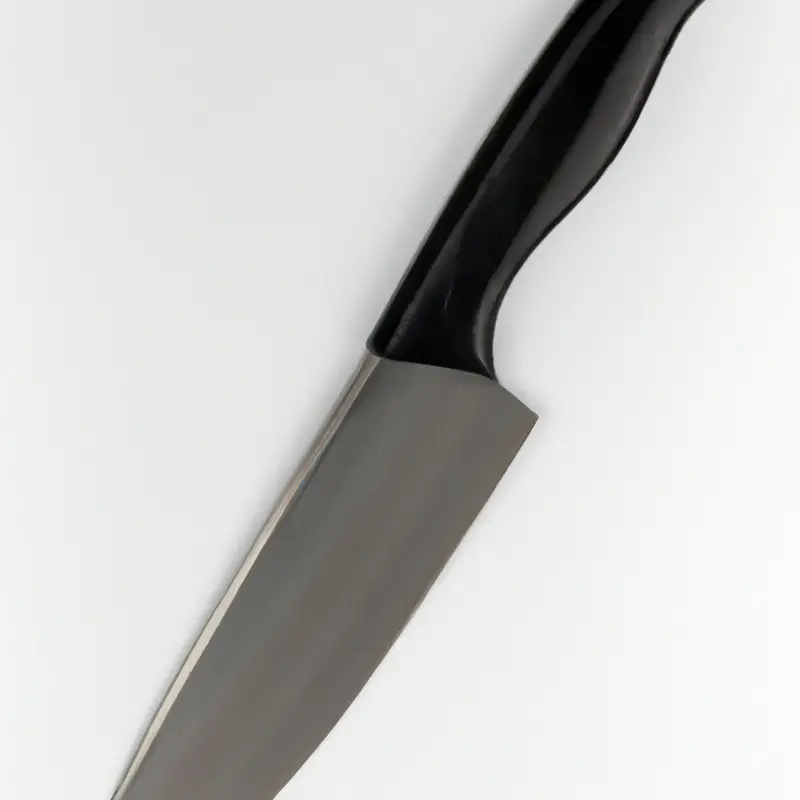
The importance of balance and weight in a Santoku knife and chef knife
Balance and weight play a crucial role in the performance of both Santoku and chef knives. A well-balanced knife ensures better control while cutting, reducing the likelihood of accidents and fatigue.
A knife that is too heavy can cause discomfort and make it challenging to maneuver, while a knife that is too light can make the cutting job difficult and strenuous for the user.
When choosing a Santoku or chef knife, it is advisable to hold them to assess their balance and weight before making a purchase. A comfortable grip, good balance, and appropriate weight can ensure consistent cuts and an enjoyable cooking experience.
In general, Santoku knives are lighter and shorter in length than chef knives, making them more suitable for slicing vegetables, boneless meats, and fish.
Chef knives, on the other hand, are longer and heavier, allowing for more versatility and precision while cutting through thicker and tougher ingredients, such as meat and poultry. To maximize the effectiveness of a Santoku or chef knife, it is essential to understand the importance of balance and weight, selecting a knife that is comfortable to hold and wield.
Ultimately, a well-balanced knife ensures a safer, easier, and more enjoyable cooking experience.
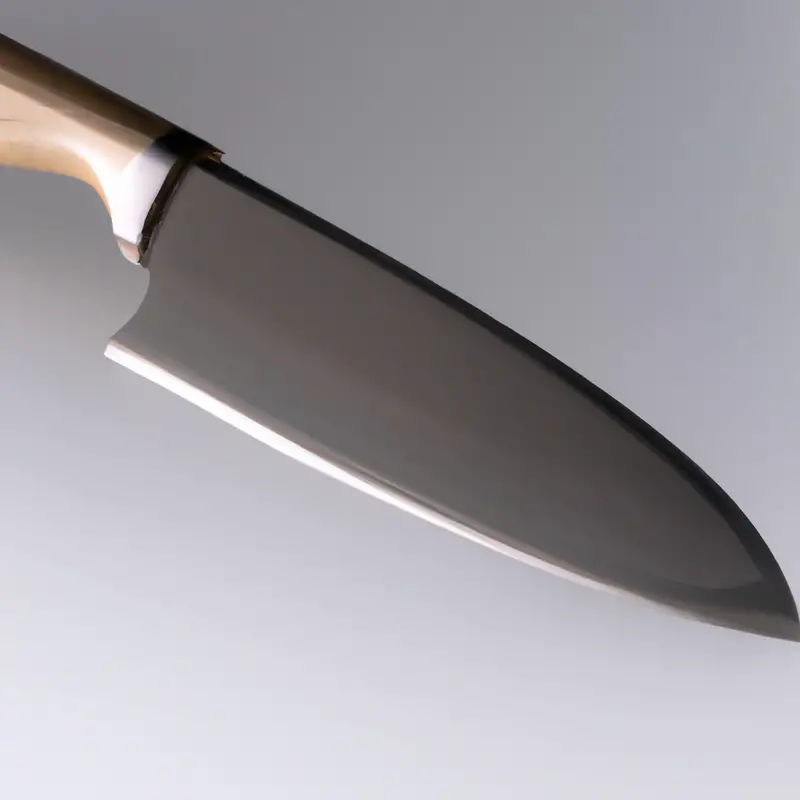
Maintaining and caring for a Santoku knife and chef knife: similarities and differences
Maintaining and caring for both a Santoku knife and a chef knife is similar in many ways. Both knives should be hand-washed and dried immediately to prevent rusting and staining.
Both knives should also be sharpened regularly to maintain their sharpness and performance.
However, there are some differences in how to maintain and care for each knife. Santoku knives with grantons should be cleaned with a brush to remove any food particles that may get trapped in the grooves.
In contrast, chef knives with a flat edge are easier to clean with a simple wipe using a damp cloth.
When it comes to storage, both knives should be stored in a knife block or on a magnetic strip to prevent damage to the blade. However, Santoku knives should be stored separately from other knives to prevent the grantons from getting damaged.
In terms of sharpening, both knives can be sharpened using a sharpening stone or a honing rod.
However, because Santoku knives have a harder blade, they may require a finer grit sharpening stone or a professional sharpening service. Overall, maintaining and caring for both a Santoku knife and a chef knife requires regular cleaning and sharpening.
However, there are some subtle differences in how to care for each knife.
Price differences between a Santoku knife and a chef knife: is one worth the investment over the other?
Price is a crucial factor when choosing between a Santoku knife and a chef knife. Generally, Santoku knives are less expensive than chef knives, with prices starting at around $30 for entry-level models compared to chef knives that can cost upwards of $200.
However, some high-end Santoku knives can also be quite expensive, ranging from $150 to $350.
When it comes to deciding whether one is worth the investment over the other, it depends on personal preference and how often the knife will be used. For those who prioritize versatility and require a knife for various tasks in the kitchen, a chef knife might be a better investment due to its longer blade and wider range of cutting techniques.
However, if someone is looking for a knife specifically for slicing, dicing, and chopping fruits, vegetables, and boneless meats, a Santoku knife may suffice.
Ultimately, the price differences between a Santoku knife and a chef knife come down to individual budget and needs. It is essential to consider the quality of the blade, the weight and balance of the knife, and the type of cutting tasks the knife is expected to perform before making a purchase decision.
Final Verdict
Understanding the differences between a Santoku knife and a chef knife can greatly enhance your culinary experience. With their unique blade shapes and cutting techniques, each knife has its own strengths and ideal uses.
While a chef knife’s longer length and flat edge make it ideal for heavy-duty tasks, a Santoku knife’s grantons and shorter length make it perfect for precise slicing and dicing.
By choosing the right knife for your ingredients and cooking style, you can elevate your dishes and achieve professional results. Remember to consider the balance, weight, and maintenance of each knife when making your decision.
Investing in a high-quality knife that meets your needs can make all the difference in the kitchen.
Trust in the knowledge and expertise presented in this article to confidently choose the perfect knife for your cooking needs.

